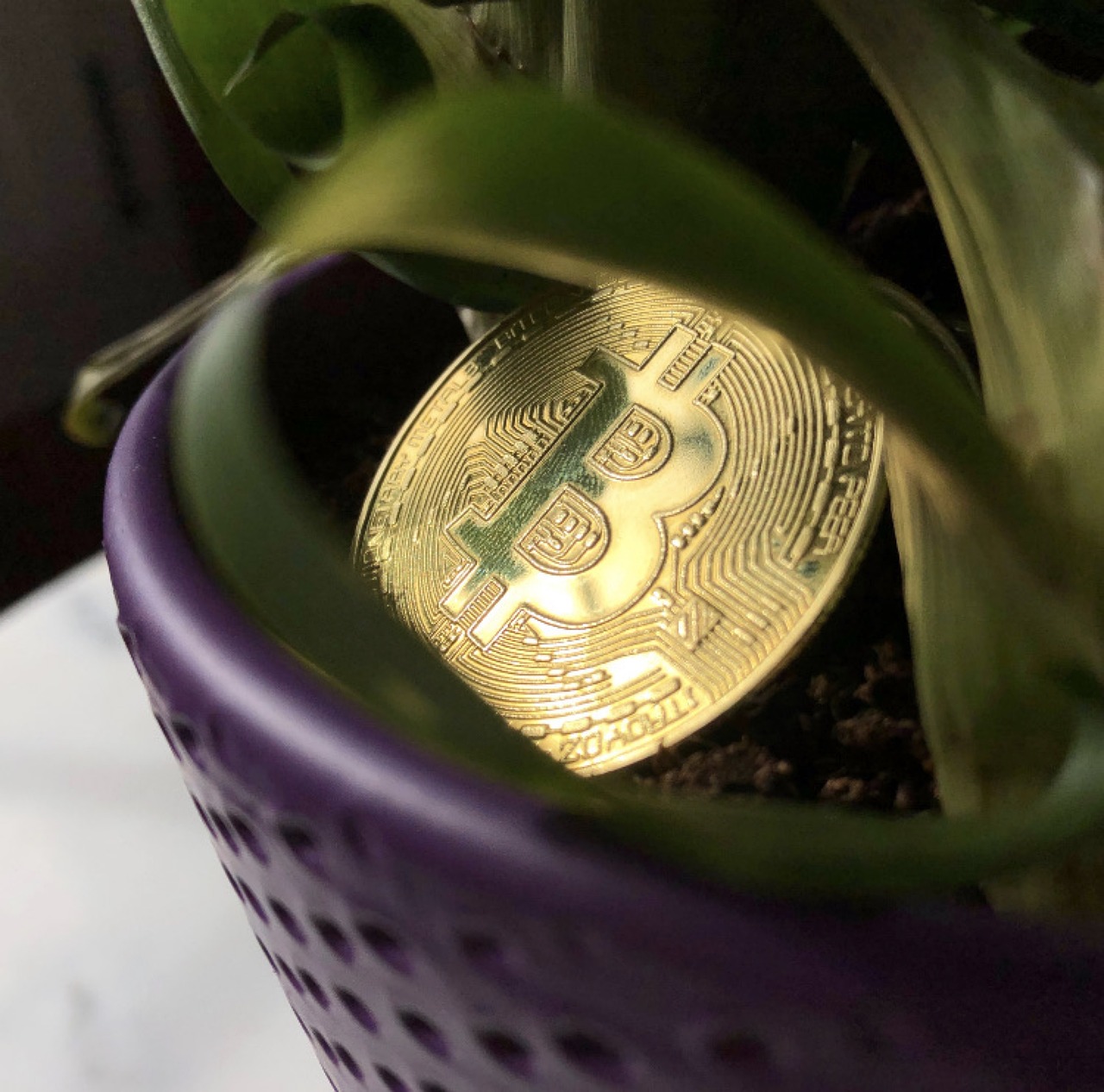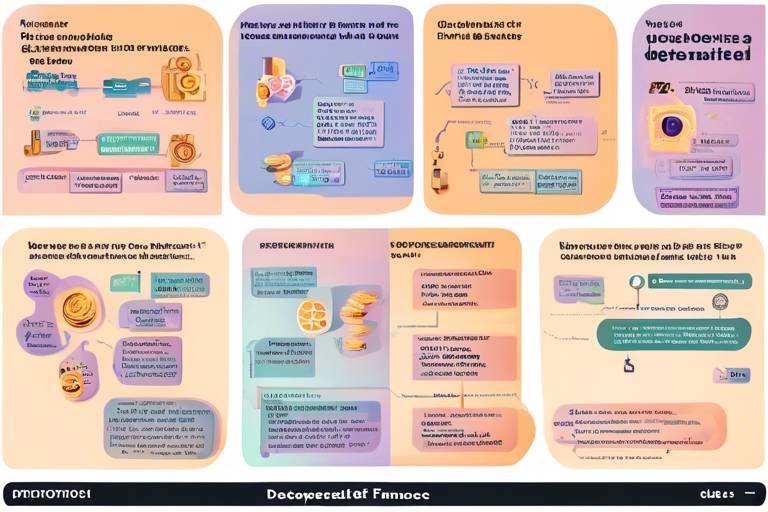How to Evaluate Blockchain Solutions for Your Business
In today's digital landscape, the buzz around blockchain technology is impossible to ignore. Businesses across various sectors are exploring this innovative solution to enhance transparency, security, and efficiency. However, with numerous options available, how do you determine which blockchain solution is the right fit for your organization? This comprehensive guide will walk you through the essential criteria to assess blockchain solutions, helping you make informed decisions that align with your business goals.
Before diving into the evaluation process, it's crucial to grasp the fundamentals of blockchain technology. At its core, a blockchain is a decentralized ledger that records transactions across multiple computers. This structure not only ensures that the data is secure and immutable but also enhances transparency among all parties involved. There are different types of blockchains, including public, private, and consortium blockchains, each serving unique purposes. Understanding these differences will provide you with a solid foundation to evaluate potential solutions tailored to your business needs.
Every successful blockchain implementation begins with a clear understanding of your business objectives and challenges. Before evaluating potential solutions, take the time to assess your specific needs. Ask yourself questions like, "What problems am I trying to solve?" and "How can blockchain technology enhance my current processes?" Aligning your business goals with potential blockchain applications is key to a successful evaluation.
Establishing clear goals is essential for successful blockchain implementation. Whether you're looking to improve supply chain transparency, enhance data security, or streamline payment processes, articulating your objectives will guide your evaluation process effectively. Remember, the more specific your goals, the easier it will be to find a solution that meets your needs.
Defining success metrics can help you evaluate the effectiveness of a blockchain solution. Consider key performance indicators (KPIs) such as transaction speed, cost reduction, and user satisfaction. By establishing measurable goals, you'll be able to assess whether a blockchain implementation is delivering the desired outcomes.
Engaging stakeholders is vital for gathering diverse perspectives. Involve key stakeholders in the evaluation process to ensure comprehensive insights. This could include team members from IT, operations, finance, and even end-users. By understanding their needs and concerns, you can make more informed decisions that benefit the entire organization.
Choosing the right blockchain provider is critical. Not all solutions are created equal, and the experience, reputation, and technological capabilities of potential vendors can vary widely. Look for providers with a proven track record in your industry and those who offer robust support and training. A reliable partner can make all the difference in your blockchain journey.
Understanding the technical aspects of blockchain solutions is essential. Key features to consider include scalability, security, and interoperability. Scalability ensures that the solution can handle future growth, while security protects sensitive data. Interoperability allows the blockchain to integrate with existing systems, ensuring a seamless transition.
Security is paramount in blockchain technology. Look for essential security features and protocols, such as encryption, consensus mechanisms, and access controls. A solution that prioritizes security will help protect your business data from potential breaches, giving you peace of mind.
Evaluating scalability is crucial for future growth. Assess a blockchain solution's performance capabilities to ensure it meets your business's evolving needs. Consider factors like transaction throughput and latency. A scalable solution will accommodate your organization's growth without compromising performance.
Implementing blockchain can present various challenges. From technical hurdles to organizational resistance, it's essential to anticipate potential obstacles and develop strategies for overcoming them. A proactive approach will help ensure a smooth transition to blockchain technology.
Successful implementation requires effective change management. Best practices for managing organizational change during the transition to blockchain solutions include clear communication, training programs, and involving employees in the process. By fostering a culture of collaboration, you can ease the transition and encourage adoption.
Integrating blockchain with current systems can be complex. Develop strategies for ensuring seamless integration to maximize the benefits of your blockchain solution. This might involve working closely with IT teams and conducting thorough testing to identify and resolve potential issues before full implementation.
Conducting a cost-benefit analysis is essential for evaluating the financial implications of blockchain solutions. Assess costs, potential savings, and return on investment (ROI). This analysis will help you make informed decisions about whether the benefits of implementing a blockchain solution outweigh the costs.
Understanding the long-term financial benefits of blockchain is crucial. Project future savings and revenue increases from implementing blockchain solutions. By considering the long-term impact, you can make a more informed decision about the value of your investment.
Budgeting effectively for blockchain implementation can minimize risks. Create a realistic budget that accounts for all potential costs involved, including software, hardware, training, and ongoing support. A well-planned budget will help you avoid unexpected expenses and ensure a smoother implementation process.
Staying informed about future trends is vital for long-term success. Emerging trends in blockchain technology could significantly impact your business evaluation process. Keeping an eye on these developments will help you remain competitive and make informed decisions.
Understanding regulatory changes is essential for compliance. Current and anticipated regulations affecting blockchain technology may influence your decisions. Stay updated on legal requirements to ensure your blockchain solution adheres to relevant laws and standards.
Keeping up with innovations can provide a competitive edge. The latest advancements in blockchain solutions, such as smart contracts and decentralized finance (DeFi), should be considered during evaluation. Embracing innovative technologies can enhance your business operations and drive growth.
Q: What is blockchain technology?
A: Blockchain technology is a decentralized digital ledger that securely records transactions across multiple computers, ensuring transparency and immutability.
Q: How can blockchain benefit my business?
A: Blockchain can enhance transparency, improve security, streamline processes, and reduce costs, making it a valuable tool for various industries.
Q: What should I look for in a blockchain provider?
A: When evaluating blockchain providers, consider their experience, reputation, technological capabilities, and support services.
Q: How do I assess the scalability of a blockchain solution?
A: Evaluate factors such as transaction throughput and latency to determine if a blockchain solution can accommodate your business's future growth.
Q: What are the potential challenges of implementing blockchain?
A: Challenges may include technical hurdles, resistance to change, and integration with existing systems. Anticipating these issues can help facilitate a smoother transition.

Understanding Blockchain Technology
To truly evaluate blockchain solutions for your business, it's essential to grasp the fundamentals of blockchain technology. At its core, blockchain is a decentralized digital ledger that records transactions across many computers in such a way that the registered transactions cannot be altered retroactively. This unique structure ensures transparency and security, making it a powerful tool for various applications in business. Imagine it as a digital chain of blocks, where each block contains a number of transactions. Once a block is filled, it gets added to the chain in a linear, chronological order, creating an immutable record that everyone in the network can trust.
There are several types of blockchain systems, each tailored to different needs and use cases. The primary categories include:
- Public Blockchains: These are open to anyone and are typically used for cryptocurrencies like Bitcoin. They offer high levels of transparency and security.
- Private Blockchains: Restricted to a specific group of users, these are often used by businesses for internal processes. They provide more control and privacy.
- Consortium Blockchains: These are governed by a group of organizations, making them a hybrid of public and private blockchains. They are ideal for industries where multiple parties need to collaborate.
Understanding how blockchain operates is equally important. The technology relies on a consensus mechanism to validate transactions, ensuring that all parties agree on the state of the ledger. Common consensus algorithms include Proof of Work and Proof of Stake, each with its own strengths and weaknesses. For instance, Proof of Work, used by Bitcoin, requires significant computational power, while Proof of Stake is more energy-efficient and rewards users for holding onto their tokens.
Another vital aspect to consider is the concept of smart contracts. These are self-executing contracts with the terms of the agreement directly written into code. They automatically enforce and execute the terms when conditions are met, eliminating the need for intermediaries. This can significantly reduce costs and enhance efficiency in transactions.
In summary, understanding blockchain technology is not just about knowing its definition; it's about comprehending its structure, types, operational mechanisms, and potential applications. This foundational knowledge will empower you to evaluate blockchain solutions effectively, aligning them with your business objectives and challenges.

Identifying Business Needs
Before diving into the world of blockchain solutions, it's essential to take a step back and truly understand your business needs. Think of this process as laying the foundation for a house; without a solid base, everything built on top can crumble. In this context, your business objectives and challenges are the very foundation upon which you will evaluate potential blockchain applications. So, how do you go about identifying these needs?
First and foremost, you need to engage in a thorough self-assessment. What are the specific pain points your organization is experiencing? Are you facing inefficiencies in your supply chain, issues with data security, or perhaps challenges in maintaining transparency with your customers? Identifying these challenges will help you narrow down the areas where blockchain can provide the most value. For instance, if you're in the manufacturing sector, consider how blockchain can enhance traceability and accountability in your supply chain.
Next, it's crucial to articulate clear objectives. This means not just identifying problems but also defining what success looks like for your organization. Are you aiming to reduce costs, improve operational efficiency, or enhance customer satisfaction? By setting these objectives, you create a roadmap that guides your blockchain evaluation process. For example, if your goal is to improve customer trust, you might focus on blockchain solutions that emphasize transparency and traceability.
Moreover, understanding the stakeholder requirements is vital. Engaging with various stakeholders—such as employees, management, and even customers—can provide diverse insights that enrich your understanding of business needs. Consider conducting workshops or surveys to gather input from different departments. This collaborative approach ensures that the solutions you evaluate align with the expectations and requirements of all parties involved.
To further illustrate this process, let’s take a look at a simple table that summarizes the steps involved in identifying business needs:
| Step | Description |
|---|---|
| Self-Assessment | Identify specific pain points and challenges within your organization. |
| Set Clear Objectives | Define what success looks like for your organization and how blockchain can help achieve it. |
| Engage Stakeholders | Gather input from various stakeholders to ensure comprehensive understanding of needs. |
Ultimately, identifying your business needs is not just a checkbox on a to-do list; it's a critical step that can make or break your blockchain journey. By taking the time to thoroughly assess your organization's objectives and challenges, you position yourself to make informed decisions about which blockchain solutions will deliver the most value. So, are you ready to embark on this journey of discovery?
- Why is it important to identify business needs before evaluating blockchain solutions?
Identifying business needs ensures that the solutions you consider align with your organization's specific challenges and objectives, maximizing the potential benefits of blockchain technology. - How can I engage stakeholders effectively?
Consider conducting workshops, surveys, or interviews to gather insights from various departments, ensuring a comprehensive understanding of business needs. - What should I do if I can't identify clear objectives?
Consult with key team members and stakeholders to brainstorm potential goals and challenges. Sometimes, collaborative discussions can uncover objectives that may not have been initially apparent.

Setting Clear Objectives
When it comes to implementing blockchain solutions in your business, one of the most critical steps is . Think of your objectives as the compass guiding your blockchain journey; without them, you might find yourself lost in a sea of options and possibilities. To begin, ask yourself: what specific problems do you want blockchain to solve? Are you aiming to enhance transparency, improve efficiency, or perhaps reduce costs? Clearly defining these goals will not only streamline your evaluation process but also help you communicate your vision to stakeholders.
Moreover, it's essential to ensure that your objectives are SMART—that is, Specific, Measurable, Achievable, Relevant, and Time-bound. This framework helps in crystallizing your goals and makes it easier to track progress. For instance, instead of saying, "I want to improve customer service," a SMART objective would be, "I want to reduce customer query response time by 50% within six months." This level of specificity allows for a focused approach and sets the stage for measuring success down the line.
Engaging with your team during this phase is also crucial. By involving various departments—like operations, finance, and IT—you can gather diverse insights to shape your objectives. Often, what may seem like a minor issue in one department can be a significant hurdle in another. Therefore, a collaborative approach ensures that the objectives are comprehensive and aligned with the overall business strategy.
Once your objectives are defined, it's time to prioritize them. You might find that some goals are more urgent or impactful than others. For example, if your primary aim is to enhance security due to recent data breaches, that should take precedence over less critical objectives. This prioritization not only helps in resource allocation but also keeps the team focused on what truly matters.
Finally, documenting your objectives is vital. Create a well-structured document that outlines your goals, the rationale behind them, and the expected outcomes. This document will serve as a reference point throughout the evaluation and implementation phases, ensuring that everyone remains aligned and accountable. In the fast-paced world of technology, having a clear roadmap can make a world of difference in navigating the complexities of blockchain solutions.
- What are the key benefits of setting clear objectives for blockchain implementation?
Setting clear objectives helps streamline the evaluation process, ensures alignment among stakeholders, and provides measurable outcomes for success. - How can I ensure that my objectives are SMART?
To ensure your objectives are SMART, make them specific, measurable, achievable, relevant, and time-bound. For example, instead of a vague goal, specify the exact outcome you want to achieve and the timeframe for accomplishing it. - Why is stakeholder engagement important in setting objectives?
Engaging stakeholders from various departments provides diverse insights and ensures that the objectives are comprehensive and aligned with the overall business strategy.

Measuring Success
When it comes to implementing blockchain solutions, measuring success is not just a checkbox on your to-do list; it's the compass guiding your journey. You wouldn't set sail without a map, right? Similarly, defining key performance indicators (KPIs) will help you navigate through the complexities of blockchain technology and ensure that your investment delivers the expected returns. Here are some crucial metrics to consider:
- Return on Investment (ROI): This is perhaps the most critical metric. It helps you evaluate the financial gains against the costs incurred in implementing the blockchain solution. A positive ROI indicates that the solution is successfully adding value to your business.
- Transaction Speed: One of the primary advantages of blockchain is its ability to process transactions faster than traditional systems. Measuring the speed of transactions before and after implementation can provide insights into efficiency gains.
- Cost Reduction: Assessing how much your operational costs have decreased post-implementation is vital. This includes savings from reduced intermediaries, lower transaction fees, and improved efficiency.
- User Adoption Rate: The success of any technology hinges on user acceptance. Tracking how quickly and extensively your team adopts the new system can indicate its usability and effectiveness.
- Error Rate: In any system, errors can occur. Monitoring the frequency of errors or discrepancies in transactions can help you gauge the reliability of your blockchain solution.
Moreover, it's essential to align these metrics with your business objectives. For example, if your goal is to enhance transparency, you might focus on measuring the accuracy and accessibility of data across the blockchain network. The clearer your objectives, the easier it will be to assess whether the solution meets your expectations.
To further enhance your evaluation, consider creating a success measurement framework. This framework should outline how you will collect data, the frequency of assessments, and the stakeholders involved in the evaluation process. By establishing a structured approach, you can ensure that you’re not only measuring success but also continuously optimizing your blockchain strategy.
In summary, measuring success in your blockchain journey is not a one-time event; it’s an ongoing process that requires diligence and adaptability. By focusing on the right KPIs and aligning them with your business goals, you can ensure that your blockchain implementation is not just a technological upgrade but a transformative leap forward.
What are the key performance indicators (KPIs) for measuring blockchain success?
Key performance indicators include Return on Investment (ROI), transaction speed, cost reduction, user adoption rate, and error rate. These metrics help assess the effectiveness of your blockchain solution.
How often should I evaluate the success of my blockchain implementation?
Evaluations should be continuous, with regular assessments at predetermined intervals (e.g., quarterly or bi-annually) to ensure that the blockchain solution remains aligned with your business objectives.
Can I adjust my success metrics after implementation?
Absolutely! As your business evolves, so should your success metrics. Regularly revisiting and adjusting your KPIs will help you stay aligned with your strategic goals and the changing landscape of blockchain technology.

Understanding Stakeholder Requirements
When diving into the world of blockchain, it's essential to recognize that your stakeholders are the heartbeat of your project. Engaging them early on can illuminate a treasure trove of insights that can shape your blockchain strategy. Stakeholders can include anyone from executives and IT staff to end-users and customers. Each group has unique perspectives, needs, and concerns that can significantly influence the success of your blockchain implementation.
So, how do you go about gathering these diverse viewpoints? Start by organizing workshops or brainstorming sessions where stakeholders can voice their opinions. This collaborative approach not only fosters a sense of ownership among team members but also helps in identifying potential challenges and opportunities. For instance, executives may focus on the strategic alignment of blockchain with business goals, while IT personnel might be more concerned with the technical feasibility and integration with existing systems.
To ensure you cover all bases, consider these key areas when engaging stakeholders:
- Business Goals: What are the specific objectives you hope to achieve with blockchain? Understanding this helps in aligning the technology with your business strategy.
- Technical Requirements: What are the technical needs and constraints? This includes considerations like security, scalability, and interoperability with existing systems.
- User Experience: How will end-users interact with the blockchain solution? Their feedback is crucial for designing user-friendly interfaces and functionalities.
- Compliance and Regulatory Needs: What regulations must be adhered to? Engaging legal stakeholders can help in navigating the complex landscape of compliance.
After gathering input from stakeholders, it’s important to synthesize this information into a clear set of requirements. This can be done through creating a Stakeholder Requirements Document that outlines the expectations and needs of each group. This not only serves as a reference point during the evaluation process but also ensures that everyone is on the same page moving forward.
Finally, remember that stakeholder engagement is not a one-time event. As your blockchain project evolves, continuous feedback will be invaluable. Regular check-ins can help you adapt to changing needs and ensure that the solution remains aligned with the strategic goals of the business. In this fast-paced digital landscape, flexibility and responsiveness can make all the difference in achieving a successful blockchain implementation.

Assessing Solution Providers
When it comes to choosing the right blockchain solution provider, the stakes are high. Your business's success could hinge on this decision, and that's why it's crucial to assess potential vendors thoroughly. You wouldn't hire just anyone to manage your finances, right? The same principle applies here. You want to ensure that the provider you choose has the right mix of experience, reputation, and technological capabilities.
First and foremost, consider the experience of the solution provider. Have they worked with businesses similar to yours? A provider with a proven track record in your industry can offer invaluable insights and tailor solutions to meet your specific needs. Look for case studies or testimonials that demonstrate their capability. You might find that a company specializing in healthcare blockchain solutions has successfully implemented systems that improved patient data security and streamlined operations. This could be a game-changer for your own business.
Next, investigate the reputation of the provider. This can be done by checking online reviews, industry publications, and forums where businesses share their experiences. A provider with a strong reputation is often a reliable choice. Remember, a provider's reputation is like a double-edged sword; a single negative review can tarnish their image, so you want to see a consistent pattern of positive feedback. Don't hesitate to ask for references and follow up with them to gain deeper insights.
Technological capabilities are another critical factor. You’ll want to assess whether the provider uses cutting-edge technology and follows best practices in blockchain development. Are they keeping up with the latest trends and innovations in the field? A provider that is continually evolving and adapting will be better equipped to meet your future needs. Look for features such as scalability, security protocols, and interoperability with existing systems. A robust technological foundation will ensure that your blockchain solution can grow alongside your business.
Moreover, consider the support and training offered by the provider. Transitioning to a blockchain solution can be a significant shift for your team, and having a partner that provides comprehensive support can make all the difference. Inquire about their training programs and ongoing support options. Will they be available for troubleshooting after the implementation? A provider that prioritizes customer service will likely foster a long-term partnership that benefits both parties.
Finally, don't overlook the importance of cost. While you shouldn’t choose a provider based solely on price, it’s essential to understand the financial implications of your decision. Request detailed quotes and compare them against the value offered. A higher price tag might be justified if the provider brings exceptional expertise and support to the table. Just like in any investment, you want to ensure that you’re getting the most bang for your buck.
In summary, assessing solution providers is a multifaceted process that requires careful consideration of experience, reputation, technological capabilities, support, and cost. By taking the time to evaluate these factors, you can make an informed decision that aligns with your business objectives and sets you on a path toward successful blockchain implementation.
- What should I look for in a blockchain solution provider? Focus on their experience in your industry, reputation, technological capabilities, support services, and pricing.
- How can I verify a provider's reputation? Check online reviews, industry forums, and ask for references from former clients.
- Is cost the most important factor when choosing a provider? While cost is important, it shouldn't be the sole deciding factor. Consider the overall value and support offered.
- What if my business needs change after implementation? Choose a provider that offers scalable solutions and ongoing support to adapt to your evolving needs.

Evaluating Technical Features
When diving into the world of blockchain solutions, understanding the technical features is crucial. Just like choosing a car, you wouldn't just look at the color; you'd want to know about the engine, safety features, and fuel efficiency. Similarly, evaluating the technical aspects of blockchain can make or break your business's success in adopting this revolutionary technology. Let’s explore some of the key features you should consider, including scalability, security, and interoperability.
First off, scalability is a major concern. As your business grows, your blockchain solution should be able to handle increased transactions without a hitch. Imagine a restaurant that can only serve ten customers at a time but suddenly has a hundred people at the door; it would be chaos! Hence, you want a solution that can scale up efficiently. Look for metrics such as transaction throughput and latency. A table summarizing these metrics can be incredibly helpful:
| Metric | Definition | Importance |
|---|---|---|
| Transaction Throughput | Number of transactions processed per second | Indicates how well the system can handle increased load |
| Latency | Time taken to complete a transaction | Impacts user experience and system efficiency |
Next up is security. In a digital age where data breaches are all too common, security cannot be an afterthought. Blockchain, by its very nature, offers a level of security through its decentralized structure, but not all solutions are created equal. Look for features such as encryption standards, access controls, and audit trails. A robust security framework should include:
- Encryption: Ensures that data is secure and only accessible to authorized users.
- Access Controls: Limits who can view or edit data on the blockchain.
- Audit Trails: Provides a record of all transactions, making it easier to track changes and identify potential breaches.
Another critical technical feature to evaluate is interoperability. As businesses often utilize multiple systems and platforms, your blockchain solution needs to communicate effectively with existing technologies. Think of it like trying to connect different brands of electronics; if they don't work together, you won't get the full benefit. Check if the solution supports standard protocols and APIs that facilitate this integration.
In summary, evaluating the technical features of blockchain solutions is not just about ticking boxes; it's about ensuring that the technology aligns with your business needs and future growth. By focusing on scalability, security, and interoperability, you can make a more informed decision that sets your business up for success in the evolving digital landscape.
Q: What is the most important technical feature to consider in a blockchain solution?
A: While all features are important, scalability is often considered the most critical as it determines how well the solution can grow with your business.
Q: How can I assess the security of a blockchain solution?
A: Look for features like encryption standards, access controls, and audit trails. Additionally, consider the provider's track record and any security certifications they may have.
Q: What does interoperability mean in the context of blockchain?
A: Interoperability refers to the ability of the blockchain solution to work seamlessly with other systems and platforms, ensuring that data can flow freely and efficiently across different technologies.

Security Considerations
When diving into the world of blockchain solutions, one of the most critical aspects to consider is security. After all, you're not just dealing with data; you're managing sensitive information that could significantly impact your business. The decentralized nature of blockchain technology offers inherent security advantages, but it doesn't mean you can let your guard down. In fact, assessing the security features of a blockchain solution should be at the top of your evaluation checklist.
First and foremost, you should look for robust encryption protocols. Encryption is the backbone of blockchain security, ensuring that data is securely stored and transmitted. Most reputable blockchain solutions utilize advanced cryptographic techniques to protect data integrity and confidentiality. For instance, look for solutions that implement SHA-256 hashing, which is widely regarded as a secure hashing algorithm. This ensures that even if someone tries to tamper with the data, it will be almost impossible to alter without detection.
Another vital aspect is the consensus mechanism employed by the blockchain solution. Different consensus algorithms, such as Proof of Work (PoW), Proof of Stake (PoS), or Delegated Proof of Stake (DPoS), have varying levels of security and efficiency. Understanding how these mechanisms work can help you determine how secure the network is against attacks, such as double-spending or Sybil attacks. For example, PoW, while energy-intensive, has proven to be highly secure, as it requires significant computational power to validate transactions.
Additionally, consider the identity and access management features of the blockchain solution. It’s crucial to control who has access to what data. Solutions that offer multi-signature capabilities, where multiple parties must approve a transaction, can significantly enhance security. Furthermore, ensure that the solution incorporates role-based access controls to limit access based on user roles, reducing the risk of unauthorized data exposure.
Moreover, it’s essential to evaluate the blockchain's audit and monitoring capabilities. A good blockchain solution should provide transparency and traceability, allowing you to track transactions in real-time. This feature not only helps in identifying potential security breaches but also ensures compliance with various regulations. Look for solutions that offer detailed logging and reporting functionalities, enabling you to conduct regular audits and maintain oversight of your blockchain operations.
Lastly, don’t overlook the importance of third-party security audits. Engaging an independent security firm to evaluate the blockchain solution can provide you with an unbiased assessment of its security posture. This step is often overlooked, but it can reveal vulnerabilities that may not be apparent during initial evaluations. A reputable provider should be open to sharing their audit reports, giving you greater confidence in your choice.
In summary, security considerations are paramount when evaluating blockchain solutions. By focusing on encryption, consensus mechanisms, identity management, auditing capabilities, and third-party audits, you can significantly enhance the security of your business's blockchain implementation. Remember, in the digital age, a secure blockchain is not just a luxury; it's a necessity.
- What is the most secure consensus mechanism?
The security of a consensus mechanism can vary based on the specific use case. Generally, Proof of Work (PoW) is considered highly secure, but it comes with trade-offs in terms of energy consumption. Proof of Stake (PoS) offers a more energy-efficient alternative while maintaining security.
- How can I ensure my blockchain solution is compliant with regulations?
Engaging legal experts familiar with blockchain technology can help you navigate compliance issues. Additionally, ensure that the blockchain solution you choose has built-in compliance features and can adapt to regulatory changes.
- What should I do if I suspect a security breach?
If you suspect a breach, immediately initiate your incident response plan. This may include isolating affected systems, conducting a forensic investigation, and notifying stakeholders as necessary.

Scalability and Performance
When you're diving into the world of blockchain solutions, one of the most crucial aspects to consider is scalability. Imagine your business as a bustling restaurant; on a regular night, everything runs smoothly, but what happens when a surprise event brings in a crowd? If your restaurant can't accommodate the extra diners, you'll lose potential revenue and damage your reputation. Similarly, a blockchain solution must be able to handle increased transactions and data loads without breaking a sweat.
Scalability in blockchain refers to the system's ability to grow and manage increased demand. This can be influenced by several factors, including network architecture, consensus mechanisms, and the specific use case you are targeting. It's essential to evaluate how well a blockchain solution can scale as your business grows. For instance, if your business anticipates rapid growth or seasonal spikes in demand, you need a solution that can adapt and expand accordingly.
Performance is another critical aspect that goes hand in hand with scalability. Just like a restaurant needs to serve meals quickly to keep customers happy, a blockchain solution must process transactions efficiently. When assessing performance, consider the following:
- Transaction Speed: How quickly can the system process transactions? A slow system can lead to bottlenecks, frustrating users and potentially costing you business.
- Throughput: This refers to the number of transactions the blockchain can handle per second. Higher throughput means the system can accommodate more users simultaneously.
- Latency: The time it takes for a transaction to be confirmed. Lower latency is crucial for real-time applications.
To give you a clearer picture, let’s look at a comparison table of different blockchain solutions based on scalability and performance metrics:
| Blockchain Solution | Transaction Speed (TPS) | Scalability Rating | Use Case Suitability |
|---|---|---|---|
| Ethereum 2.0 | 30 | Moderate | Smart Contracts, DApps |
| Solana | 65,000 | High | Decentralized Finance, NFTs |
| Hyperledger Fabric | 1,000 | High | Enterprise Solutions |
| Ripple | 1,500 | High | Banking, Cross-border Payments |
In conclusion, when evaluating blockchain solutions, keep an eye on both scalability and performance. They are not just technical specifications; they are vital components that can determine the success or failure of your blockchain implementation. A solution that can scale efficiently while maintaining high performance will not only meet your current needs but will also adapt to future challenges. As you move forward, ask yourself: Is this solution built to grow with my business?
Q1: What is scalability in blockchain?
Scalability in blockchain refers to the system's ability to handle an increasing amount of work or its potential to accommodate growth. It is essential for maintaining performance as user demand rises.
Q2: How can I measure the performance of a blockchain solution?
You can measure performance through transaction speed (TPS), throughput, and latency. These metrics will help you understand how well the blockchain can handle your business's needs.
Q3: Why is scalability important for my business?
Scalability is crucial because it ensures that your blockchain solution can grow alongside your business. If your system can't handle increased demand, it could lead to lost opportunities and customer dissatisfaction.

Implementation Challenges
Implementing blockchain technology can be a thrilling yet daunting journey for businesses. It's like embarking on an expedition into uncharted territory; you can see the potential rewards, but the path is filled with obstacles that need careful navigation. One of the primary challenges is the organizational resistance to change. Many employees may feel uncertain or threatened by the introduction of new technology, fearing it could disrupt their roles or the established workflows. To tackle this, it's essential to foster an environment of open communication and education about the benefits of blockchain. By involving employees in the transition and addressing their concerns, you can create a more accepting atmosphere.
Another significant hurdle is the integration of blockchain with existing systems. Businesses often rely on a variety of legacy systems that may not be compatible with blockchain solutions. This can lead to complications, such as data silos or inefficiencies. To ensure a seamless integration, it’s crucial to conduct a thorough analysis of your current systems and identify how blockchain can complement them. This may involve working with IT specialists who can help bridge the gap between old and new technologies.
Moreover, the lack of skilled professionals in the field of blockchain can pose a challenge. The technology is still relatively new, and finding qualified personnel who understand both blockchain and your specific industry can be tricky. Investing in training programs or collaborating with blockchain experts can help alleviate this issue. Additionally, consider forming partnerships with educational institutions to develop a pipeline of talent that can support your blockchain initiatives.
Lastly, businesses must navigate the complex landscape of regulatory compliance. As blockchain technology evolves, so do the regulations surrounding it. It's essential to stay informed about current and upcoming regulations that could impact your blockchain solution. Engaging legal experts who specialize in blockchain can provide guidance and help ensure that your implementation adheres to all necessary laws.
In summary, while the implementation of blockchain technology presents challenges, they are not insurmountable. By proactively addressing organizational resistance, ensuring seamless integration with existing systems, investing in talent development, and staying compliant with regulations, businesses can successfully transition to blockchain and unlock its vast potential.
- What are the main challenges of implementing blockchain technology?
Common challenges include organizational resistance to change, integration with existing systems, a shortage of skilled professionals, and navigating regulatory compliance. - How can I prepare my team for the transition to blockchain?
Foster open communication, provide training, and involve employees in the process to create a supportive environment. - What role does regulatory compliance play in blockchain implementation?
Staying compliant with regulations is crucial to ensure that your blockchain solution adheres to legal standards and avoids potential penalties.

Change Management Strategies
Implementing blockchain solutions in your business is like steering a massive ship into uncharted waters. It requires not just a solid map but also a skilled crew ready to adapt to the changing tides. Change management is the compass that will guide your organization through this transition, ensuring that everyone is on board and moving in the same direction. To effectively manage change during the blockchain implementation process, it’s essential to adopt a strategy that emphasizes communication, training, and support.
First off, communication is key. You need to keep everyone informed about the changes that are coming and why they are necessary. This means not just sending out a memo but engaging in open dialogues with your team. Host meetings, send newsletters, and create dedicated channels for feedback. By fostering an environment where employees feel comfortable voicing their concerns and suggestions, you can address potential issues before they escalate. Remember, change can be daunting, and clear communication can help alleviate fears and build trust.
Next, consider the role of training and development. As you introduce blockchain technology, your team will need to acquire new skills and knowledge. This is where targeted training programs come into play. Develop a comprehensive training plan that includes workshops, online courses, and hands-on sessions. Tailor the training to different departments, as their needs may vary. For instance, your IT team might require in-depth technical training, while your marketing department may benefit from understanding how blockchain can enhance customer engagement.
Moreover, don't underestimate the importance of providing ongoing support. Change doesn’t happen overnight, and your team will need assistance as they navigate the new system. Establish a support network that includes blockchain champions—employees who are enthusiastic about the technology and can help their peers. Additionally, consider setting up a helpdesk or an online forum where employees can ask questions and share best practices. This collaborative approach not only enhances learning but also fosters a sense of community.
Lastly, it’s crucial to monitor the progress of your change management efforts. Regularly assess how well the transition is going by gathering feedback and measuring engagement levels. You might want to use surveys or hold focus groups to gauge employee sentiment. If you notice resistance or confusion, be prepared to adjust your strategy. Change is a journey, not a destination, and being flexible will help you steer your organization toward success.
In conclusion, implementing blockchain solutions is not just about technology; it's about people. By prioritizing communication, training, support, and ongoing assessment, you can create a change management strategy that empowers your employees and paves the way for a successful transition into the world of blockchain.
- What is change management in the context of blockchain implementation?
Change management refers to the processes and strategies used to help individuals and organizations transition to new technologies and systems, such as blockchain. - Why is communication important during blockchain implementation?
Clear communication helps alleviate fears, builds trust, and ensures that everyone is on the same page regarding the changes being made. - How can I ensure my team is adequately trained for blockchain?
Develop a comprehensive training plan that includes various learning methods tailored to different departments and their specific needs. - What role do blockchain champions play in change management?
Blockchain champions are enthusiastic employees who can support their peers, share knowledge, and help ease the transition to new technologies.

Integration with Existing Systems
Integrating blockchain technology with your existing systems can feel like trying to fit a square peg in a round hole. However, with the right approach, it can be a seamless transition that enhances your operational efficiency. The key is to understand that blockchain is not just an isolated technology; it’s a transformative tool that can redefine how your business processes work. To start, you need to assess your current infrastructure and identify which systems would benefit the most from blockchain integration. Are you looking to improve supply chain transparency? Or perhaps you want to enhance data security in your transactions? Identifying these needs will guide your integration strategy.
One of the primary challenges in integration is ensuring that the blockchain solution can communicate effectively with your existing systems. This often involves developing APIs (Application Programming Interfaces) that facilitate this interaction. For instance, if your organization uses a CRM system to manage customer relationships, it’s crucial to establish a connection between this system and the blockchain to ensure that all customer data is synchronized and secure. To illustrate this, consider the following table:
| Existing System | Blockchain Benefit | Integration Method |
|---|---|---|
| CRM System | Enhanced data security and transparency | API development |
| Supply Chain Management | Real-time tracking and verification | Smart contracts |
| Financial Systems | Improved transaction speed and security | Data synchronization protocols |
Moreover, it’s essential to involve your IT team early in the integration process. They can provide valuable insights into the technical requirements and potential roadblocks. Regular communication and collaboration between blockchain developers and your existing IT staff can significantly smoothen the integration process. It’s like having a well-oiled machine; when all parts work together harmoniously, the overall performance is enhanced.
Another aspect to consider is the training of your staff. Transitioning to blockchain may require new skills and understanding of the technology. Investing in training programs will not only help your team adapt to the new systems but will also empower them to leverage blockchain’s full potential. After all, even the best technology is only as good as the people who use it.
In conclusion, while integrating blockchain with existing systems presents challenges, it also opens up a world of possibilities for your business. By taking a strategic approach, involving key stakeholders, and investing in training, you can ensure a smooth transition that enhances your operational efficiency and positions your business for future success.
- What is blockchain integration? Blockchain integration refers to the process of connecting blockchain technology with existing business systems to enhance functionality and performance.
- What are the main challenges of integrating blockchain? Common challenges include compatibility with existing systems, data synchronization, and the need for staff training.
- How can I ensure a smooth integration process? Involve your IT team early, establish clear communication, and invest in training programs for your staff.
- What benefits can I expect from blockchain integration? Benefits include improved security, enhanced transparency, and increased operational efficiency.

Cost-Benefit Analysis
Conducting a is not just a good idea; it’s essential when evaluating blockchain solutions for your business. This process helps you weigh the financial implications of adopting such technology against the potential benefits it brings. Think of it as a balancing act where you need to ensure that the scales tip favorably towards the advantages of implementing blockchain.
First, you'll want to look at the initial costs associated with the implementation. This includes expenses like software acquisition, hardware upgrades, and training for your team. It's crucial to gather accurate estimates, as underestimating costs can lead to budget overruns that derail your project. On the flip side, consider the potential savings that blockchain could offer. For instance, many businesses have reported reduced transaction costs, lower fraud rates, and increased operational efficiency after implementing blockchain solutions.
To give you a clearer picture, let’s break down some of the key factors you should consider when performing your analysis:
| Cost Factors | Benefit Factors |
|---|---|
| Initial setup costs | Reduced transaction costs |
| Ongoing maintenance expenses | Improved data security |
| Training and onboarding costs | Increased operational efficiency |
| Integration with existing systems | Enhanced customer trust |
Next, it’s important to project the return on investment (ROI). This is where the magic happens! By estimating how much you expect to save and earn over time compared to your initial investment, you can paint a clearer picture of the financial viability of your blockchain solution. A positive ROI can be a strong selling point to stakeholders who may be hesitant about the transition.
Moreover, don't forget to account for indirect benefits that may not immediately translate into financial terms. For example, enhancing your brand's reputation through greater transparency can lead to increased customer loyalty. Similarly, having a more secure and efficient system can free up your team to focus on more strategic tasks rather than getting bogged down by administrative burdens.
In conclusion, a thorough cost-benefit analysis will not only help you understand the financial implications of adopting blockchain but also guide you in making an informed decision that aligns with your business goals. Remember, it’s not just about the numbers; it’s about how those numbers translate into real-world benefits for your organization.
- What is a cost-benefit analysis? A cost-benefit analysis is a systematic approach to estimating the strengths and weaknesses of alternatives, typically used to evaluate the financial implications of a project.
- Why is a cost-benefit analysis important for blockchain implementation? It allows businesses to assess the financial viability of adopting blockchain technology by comparing the costs involved with the potential benefits.
- How can I calculate ROI for blockchain solutions? To calculate ROI, subtract the total costs from the total benefits, divide that number by the total costs, and multiply by 100 to get a percentage.

Long-Term Financial Impact
When it comes to implementing blockchain solutions, understanding the is crucial for businesses looking to make informed decisions. Blockchain technology is not just a passing trend; it represents a significant shift in how businesses operate, and its potential to transform financial outcomes cannot be overstated. By leveraging blockchain, companies can streamline operations, reduce costs, and enhance transparency, all of which contribute to improved profitability over time.
One of the most compelling financial benefits of blockchain is its ability to reduce operational costs. Traditional processes often involve multiple intermediaries, which can lead to increased expenses due to fees, delays, and inefficiencies. Blockchain, with its decentralized nature, can significantly cut down on these costs. For instance, in supply chain management, using blockchain can eliminate the need for third-party verification, thereby speeding up transactions and reducing costs associated with fraud and errors.
Moreover, the increased transparency that blockchain offers can lead to better decision-making and risk management. With real-time access to data, organizations can analyze trends and make proactive adjustments to their strategies. This capability not only enhances operational efficiency but also positions businesses to capitalize on new opportunities as they arise.
To illustrate the potential long-term financial benefits, consider the following table that outlines typical cost savings associated with blockchain implementation across various sectors:
| Sector | Traditional Cost | Blockchain Cost | Estimated Savings |
|---|---|---|---|
| Supply Chain | $10 million | $6 million | $4 million |
| Banking | $5 million | $2 million | $3 million |
| Healthcare | $8 million | $4 million | $4 million |
As seen in the table above, businesses can experience substantial savings when adopting blockchain technology. However, it's not just about cutting costs; it's also about the potential for revenue growth. By improving efficiency and reducing time-to-market, organizations can launch products and services faster, enabling them to seize market opportunities ahead of their competitors.
Furthermore, the enhanced security features of blockchain can protect businesses from costly data breaches and fraud. With an immutable ledger and encryption, blockchain reduces the risk of unauthorized access, which can lead to significant financial losses. Companies that prioritize security can save on potential legal fees, fines, and damage to their reputation, translating to positive long-term financial outcomes.
In conclusion, the long-term financial impact of blockchain adoption is multifaceted. By reducing costs, increasing transparency, and enhancing security, businesses can position themselves for sustainable growth and profitability. As you consider implementing blockchain solutions, it's essential to conduct a thorough analysis of these financial implications to ensure that your investment yields the desired results.
- What is blockchain technology? Blockchain is a decentralized digital ledger that records transactions across many computers securely and transparently.
- How can blockchain reduce costs for my business? By eliminating intermediaries and streamlining processes, blockchain can significantly lower operational costs.
- What are some examples of industries benefiting from blockchain? Industries such as supply chain, banking, and healthcare are seeing substantial benefits from blockchain implementation.
- Is blockchain secure? Yes, blockchain technology employs advanced cryptography and an immutable ledger, making it highly secure against fraud and data breaches.

Budgeting for Implementation
When it comes to implementing blockchain solutions, budgeting is not just a matter of crunching numbers; it's about strategically planning for the future. Think of your budget as a roadmap that guides you through the complexities of this innovative technology. It’s essential to create a realistic budget that accounts for all potential costs involved in the implementation process. This includes not only the initial investment in technology but also ongoing operational expenses, training, and maintenance costs.
To effectively budget for blockchain implementation, start by identifying the various components that will contribute to your overall expenses. Some of the key factors to consider include:
- Technology Costs: This encompasses the software and hardware needed to implement the blockchain solution. Depending on the complexity of the solution, these costs can vary significantly.
- Consultation Fees: Engaging with experts or consultants who specialize in blockchain can provide valuable insights but can also add to your budget.
- Training Costs: Your team will need training to effectively use and manage the new blockchain system. This is an often-overlooked expense that can lead to increased productivity in the long run.
- Ongoing Maintenance: Like any technology, blockchain solutions require upkeep. Budgeting for regular updates and maintenance is crucial to ensuring your system remains secure and efficient.
Moreover, it’s wise to consider potential hidden costs that might arise during the implementation phase. For instance, you might face unexpected expenses related to regulatory compliance, data migration, or integration with existing systems. To mitigate these risks, it’s beneficial to set aside a contingency fund—typically around 10-20% of your total budget. This buffer can help you navigate unforeseen challenges without derailing your project.
Another important aspect of budgeting is to project the return on investment (ROI). While blockchain technology can require a significant upfront investment, the long-term benefits often outweigh these costs. Consider creating a detailed cost-benefit analysis that outlines potential savings and revenue increases. This analysis should include:
| Cost Category | Estimated Cost | Potential Savings |
|---|---|---|
| Technology Costs | $50,000 | $15,000/year |
| Consultation Fees | $20,000 | $5,000/year |
| Training Costs | $10,000 | $2,000/year |
| Ongoing Maintenance | $5,000/year | $10,000/year |
By carefully considering these elements, you can create a comprehensive budget that not only addresses the immediate costs but also positions your business for long-term success. Remember, effective budgeting is not just about spending wisely; it’s about making informed decisions that align with your overall business strategy. As you move forward, keep in mind the importance of regularly reviewing and adjusting your budget to reflect changes in the market and your business needs.
- What are the typical costs associated with blockchain implementation?
Costs can vary widely depending on the complexity of the solution, but expect to budget for technology, consultation, training, and ongoing maintenance. - How can I ensure a positive ROI from my blockchain investment?
Conduct a thorough cost-benefit analysis, and focus on long-term savings and efficiency gains to project your ROI accurately. - What should I include in my contingency fund?
A contingency fund should cover unexpected costs such as regulatory compliance, integration challenges, and additional training needs.

Future Trends in Blockchain
As we venture deeper into the digital age, the landscape of blockchain technology is continuously evolving, revealing exciting trends that can significantly impact how businesses operate. Staying ahead of these trends is not just beneficial; it’s essential for companies aiming to leverage blockchain for competitive advantage. One of the most significant trends is the increasing focus on decentralized finance (DeFi). This sector has exploded in recent years, offering innovative financial solutions that bypass traditional banking systems. Imagine being able to lend, borrow, or trade assets without intermediaries—this is the promise of DeFi, and it’s reshaping financial services as we know them.
Another trend gaining momentum is the integration of blockchain with Internet of Things (IoT) devices. By combining IoT and blockchain, businesses can enhance security and transparency in data exchange. For instance, smart contracts can automate transactions between devices, ensuring that everything from supply chain logistics to energy distribution is streamlined and secure. This synergy can lead to remarkable efficiencies, making operations not only faster but also more reliable.
Moreover, regulatory developments are also on the horizon. As governments worldwide begin to recognize the potential of blockchain, we can expect more comprehensive regulations to emerge. These regulations will not only help protect consumers but also provide a clearer framework for businesses to operate within, fostering innovation while ensuring compliance. For businesses, understanding these regulatory changes is crucial for navigating the blockchain landscape effectively.
In addition, the rise of non-fungible tokens (NFTs) is another trend that cannot be overlooked. Originally popularized through digital art, NFTs are finding applications in various industries, including real estate, gaming, and even music. They provide a unique way to represent ownership and provenance of digital assets, allowing businesses to create new revenue streams and engage with customers in innovative ways.
To summarize, the future of blockchain is bright, with trends such as DeFi, IoT integration, regulatory advancements, and the rise of NFTs shaping its trajectory. Businesses that stay informed and adapt to these changes will not only survive but thrive in this dynamic environment. Embracing these trends can lead to enhanced operational efficiencies, new business models, and a competitive edge in the marketplace.
- What is the significance of decentralized finance (DeFi) in blockchain?
DeFi allows users to perform financial transactions without intermediaries, leading to lower costs and increased accessibility. - How can IoT and blockchain work together?
By integrating IoT with blockchain, businesses can enhance data security and automate transactions through smart contracts. - What role do regulations play in blockchain adoption?
Regulations provide a framework for businesses to operate within, ensuring compliance while fostering innovation. - What are NFTs, and how are they used?
NFTs are unique digital assets that represent ownership of a specific item or piece of content, finding applications across various industries.

Regulatory Developments
In the rapidly evolving landscape of blockchain technology, play a crucial role in shaping how businesses can leverage this innovative solution. As governments and regulatory bodies around the world begin to understand the implications of blockchain, they are crafting policies and regulations that can either facilitate or hinder its adoption. Staying informed about these changes is not just important; it's essential for any business looking to implement blockchain solutions.
One of the primary challenges businesses face is the lack of uniformity in regulations across different jurisdictions. For instance, while some countries have embraced blockchain and cryptocurrency with open arms, others have imposed strict regulations or outright bans. This disparity can create confusion and uncertainty for businesses trying to navigate the regulatory landscape. Therefore, it’s imperative to keep an eye on both local and international regulatory trends that may impact your blockchain initiatives.
Moreover, regulatory frameworks are often still in their infancy. Many countries are in the process of drafting legislation, which may include requirements for transparency, data protection, and anti-money laundering measures. Understanding these emerging regulations can help businesses anticipate compliance requirements and avoid potential legal pitfalls. Here are a few key areas that are currently under regulatory scrutiny:
- Data Privacy: Regulations like GDPR in Europe have set high standards for data protection, impacting how blockchain solutions handle personal data.
- Token Classification: The classification of tokens (utility vs. security) can significantly affect how they are regulated.
- Cross-Border Transactions: Different countries may have varying rules regarding cross-border blockchain transactions, necessitating careful consideration.
To effectively navigate these regulatory waters, businesses should consider consulting with legal experts who specialize in blockchain technology. This can provide valuable insights into current regulations and help in developing strategies for compliance. Additionally, participating in industry groups or forums can keep you updated on best practices and emerging trends.
In conclusion, staying ahead of regulatory developments is vital for any business looking to implement blockchain solutions. By understanding the regulatory landscape, engaging with legal experts, and actively participating in industry discussions, businesses can not only mitigate risks but also seize opportunities that arise from a well-informed approach to compliance.
Q: Why is it important to understand regulatory developments in blockchain?
A: Understanding regulatory developments is crucial for compliance, risk management, and strategic planning in adopting blockchain solutions.
Q: How can businesses stay updated on regulatory changes?
A: Businesses can stay updated by following industry news, joining blockchain associations, and consulting with legal experts.
Q: What are the potential consequences of non-compliance?
A: Non-compliance can lead to legal penalties, financial losses, and damage to a company's reputation.

Innovations in Blockchain Solutions
In the rapidly evolving world of technology, blockchain solutions are continuously being enhanced to meet the dynamic needs of businesses. Innovations in this space are not just about improving existing functionalities; they often introduce entirely new paradigms that can redefine how companies operate. For example, the advent of smart contracts has revolutionized transaction processes by automating agreements, thereby reducing the need for intermediaries and minimizing the potential for disputes.
Moreover, the integration of artificial intelligence (AI) with blockchain is a game-changer. AI can analyze vast amounts of data stored on the blockchain, providing insights that were previously unattainable. This synergy not only enhances data security but also improves decision-making processes across various sectors, from finance to supply chain management. Imagine having a system that not only secures your transactions but also predicts market trends based on historical data!
Another noteworthy innovation is the development of decentralized finance (DeFi), which aims to recreate traditional financial systems in a decentralized manner. This movement allows individuals to lend, borrow, and trade assets without relying on centralized authorities. The implications for financial inclusion are profound, as individuals in underbanked regions can access financial services that were once out of reach.
Furthermore, the emergence of non-fungible tokens (NFTs) has opened new avenues for ownership and creativity. Artists and creators can tokenize their work, ensuring authenticity and providing a new revenue stream. This innovation not only benefits creators but also allows collectors to invest in unique digital assets that can appreciate over time.
As we look to the future, interoperability between different blockchain networks is becoming increasingly important. Innovations aimed at creating bridges between various blockchains will enhance collaboration and data sharing across platforms, leading to more cohesive ecosystems. This means businesses can leverage multiple blockchain solutions without being confined to a single network, maximizing their operational efficiency.
In conclusion, the innovations in blockchain solutions are not just technological advancements; they represent a shift in how we think about trust, transparency, and efficiency in business. Staying abreast of these trends is crucial for any organization looking to harness the full potential of blockchain technology.
- What is a smart contract? A smart contract is a self-executing contract with the terms of the agreement directly written into code, allowing for automated transactions without intermediaries.
- How does AI enhance blockchain? AI can analyze blockchain data to provide insights, improve security, and enhance decision-making processes.
- What is DeFi? Decentralized finance (DeFi) refers to financial services that operate on blockchain technology without centralized intermediaries, enabling more accessible financial systems.
- What are NFTs? Non-fungible tokens (NFTs) are unique digital assets that represent ownership of a specific item or piece of content, secured on a blockchain.
- Why is interoperability important? Interoperability allows different blockchain networks to communicate and share data, enhancing collaboration and operational efficiency.
Frequently Asked Questions
- What is blockchain technology?
Blockchain technology is a decentralized digital ledger that records transactions across many computers. This ensures that the recorded transactions cannot be altered retroactively, providing a high level of security and transparency.
- How can I determine if blockchain is right for my business?
To determine if blockchain is suitable for your business, assess your specific needs and objectives. Consider whether your operations could benefit from enhanced security, transparency, or efficiency. A clear understanding of your challenges will help align potential blockchain applications with your goals.
- What key features should I look for in a blockchain solution?
When evaluating blockchain solutions, focus on key features such as scalability, security, interoperability, and user-friendliness. These attributes will ensure that the solution can grow with your business and provide robust protection for your data.
- What are the common challenges in implementing blockchain?
Common challenges include resistance to change within the organization, integration with existing systems, and ensuring stakeholder buy-in. Addressing these issues through effective change management and clear communication can facilitate smoother implementation.
- How can I measure the success of a blockchain implementation?
Success can be measured through key performance indicators (KPIs) such as cost savings, efficiency improvements, and user satisfaction. Establishing clear objectives before implementation will help you track progress and evaluate effectiveness over time.
- What is a cost-benefit analysis in the context of blockchain?
A cost-benefit analysis involves evaluating the financial implications of implementing a blockchain solution. This includes assessing initial costs, potential savings, and return on investment (ROI) to ensure that the benefits outweigh the expenses.
- How do I keep up with future trends in blockchain?
Staying informed about future trends requires continuous research and engagement with industry news. Following reputable sources, attending conferences, and participating in forums can help you keep up with innovations and regulatory developments in blockchain technology.



















